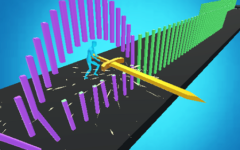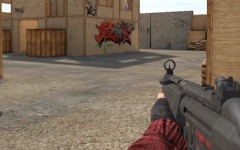Advertisement
Steal a Brainrot
Advertisement

Steal a Brainrot introduces a simple yet engaging premise: take what’s not yours and protect what is. Players are given a base where they store their collected brainrots—odd creatures that passively earn in-game currency over time. The main mechanic revolves around risking confrontation with other players to steal their brainrots and bring them back safely. With every successful heist, a player’s power and income grow, but so does the threat of becoming someone else’s target. The constant back-and-forth creates a loop of tension, planning, and reaction.
Systems That Support Progress
Progress in Steal a Brainrot is not only about stealing. Players must also think about how they defend, build, and eventually rebirth. Rebirthing allows a full reset in exchange for major upgrades, such as more creature slots and stronger tools. With more slots comes the opportunity to earn faster, but it also means more to lose during an attack. Every phase of the game—from starting out to becoming a top player—requires different strategies.
In-game mechanics include:
- Collecting brainrots from the dispenser or by stealing
- Building and upgrading a base for protection
- Rebirthing to unlock more advanced structures
- Utilizing mutated or rare brainrots for faster income
- Managing lock timers after rebirth to prevent raids
Adapting to the Environment
As players build higher-level bases, they learn to experiment with defense placements. Some use mazes, others build vertical traps, while many design paths meant to confuse or slow down invaders. It becomes a creative process that directly impacts success. Meanwhile, attackers must observe base patterns, predict enemy movements, and execute fast escapes. There’s no single strategy that works every time—improvisation often determines who keeps their brainrot and who loses it.
Community Pressure and Timed Events
What adds another layer of pressure is the presence of other active players. Base locations are visible, and raids can happen at any moment. On top of that, time-limited events introduce special creatures or challenges that bring the whole server into a race to capture something valuable. Some players form temporary alliances, while others prefer solo stealth tactics. The evolving conditions make it impossible to rely on static playstyles for long.
Constant Risk for Constant Growth
In Steal a Brainrot, every advantage comes with exposure. The stronger your base becomes, the more attractive it is to others. This encourages continuous evolution, both in base design and in stealing tactics. It’s a game built around motion—never standing still, always adapting, always watching. Whether you’re defending your most valuable brainrot or making a high-stakes escape through enemy traps, the thrill lies in knowing that any move could lead to a win—or a complete loss.






















































































































































